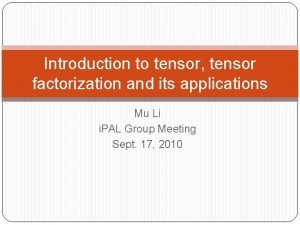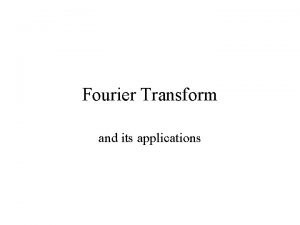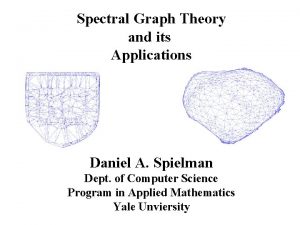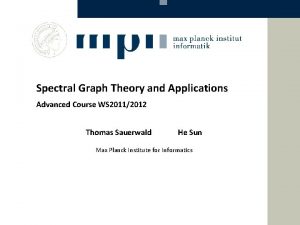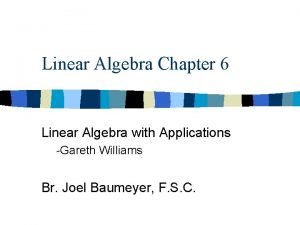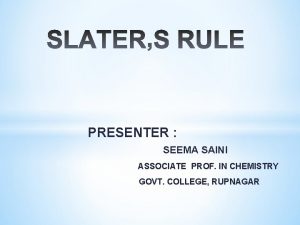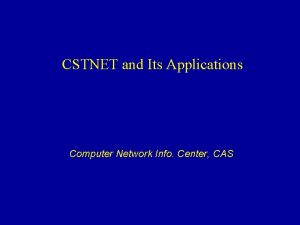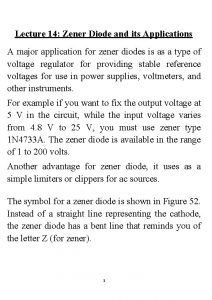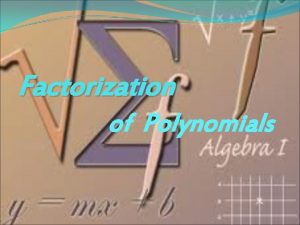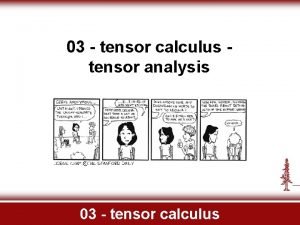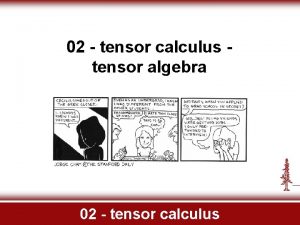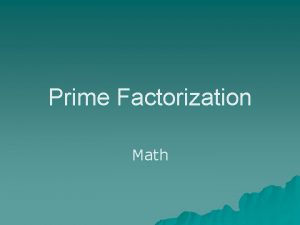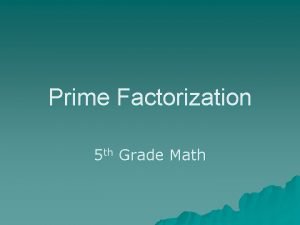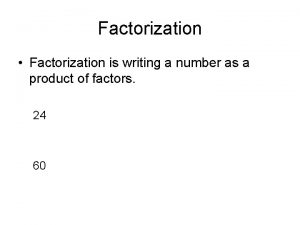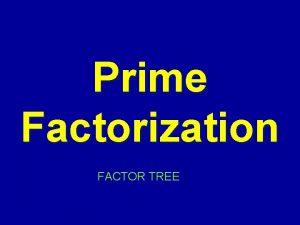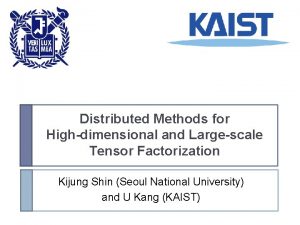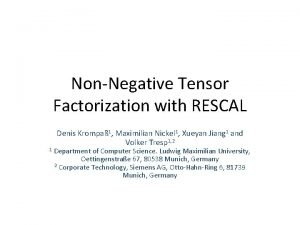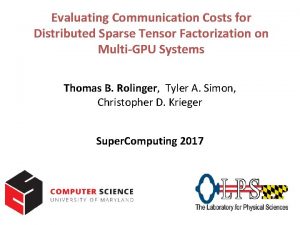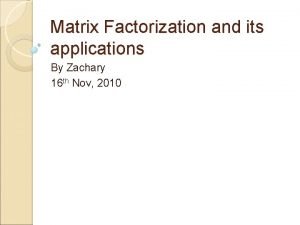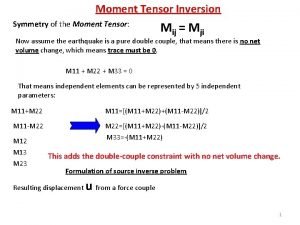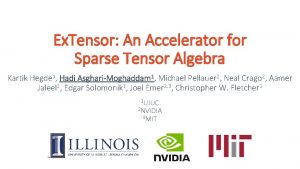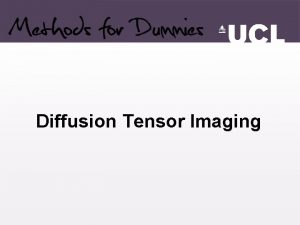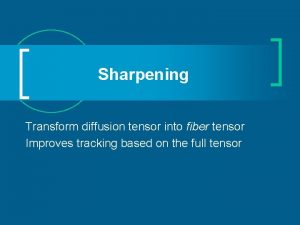Introduction to tensor tensor factorization and its applications




















- Slides: 20

Introduction to tensor, tensor factorization and its applications Mu Li i. PAL Group Meeting Sept. 17, 2010

Outline �Basic concepts about tensor 1. What’s tensor? Why tensor and tensor factorization? 2. Tensor multiplication 3. Tensor rank �Tensor factorization 1. CANDECOMP/PARAFAC factorization 2. Tucker factorization �Applications of tensor factorization �Conclusion

What’s tensor? Why tensor and tensor factorization? � Definition: a tensor is a multidimensional array which is an extension of matrix. � Tensor can happen in daily life. � In order to facilitate information mining from tensor and tensor processing, storage, tensor factorization is often needed. � Three-way tensor:

A tensor is a multidimensional array

Fiber and slice

Tensor unfoldings: Matricization and vectorization �Matricization: convert a tensor to a matrix �Vectorization: convert a tensor to a vector

Tensor multiplication: the n-mode product: multiplied by a matrix �Definition:

Tensor multiplication: the n-mode product: multiplied by a vector �Definition: �Note: multiplying by a vector reduces the dimension by one.

Rank-one Tensor and Tensor rank �Rank-one tensor: �Example: �Tensor rank: smallest number of rank-one tensors that can generate it by summing up. �Differences with matrix rank: 1. tensor rank can be different over R and C. 2. Deciding tensor rank is an NP problem that no straightforward algorithm can solve it.

Tensor factorization: CANDECOMP/PARAFAC factorization(CP) �Tensor factorization: an extension of SVD and PCA of matrix. �CP factorization: �Uniqueness: CP of tensor(higher-order) is unique under some general conditions. �How to compute: Alternative Least Squares(ALS), fixing all but one factor matrix to which LS is applied.

Differences between matrix SVD and tensor CP �Lower-rank approximation is different between matrix and higher-order tensor �Matrix: �Not true for higher-order tensor

Tensor factorization: Tucker factorization �Tucker factorization: �For three-way tensor, Tucker factorization has three types: 1. Tucker 3: 2. Tucker 2: 3. Tucker 1:

Three types of Tucker factorization

Tucker factorization �Uniqueness: Unlike CP, Tucker factorization is not unique. �How to compute: Higher-order SVD(HOSVD), for each n, Rn:

Applications of Tensor factorization �A simple application of CP:

Apply CP to reconstruct a MATLAB logo from noisy data

Apply Tucker 3 to do data reconstruction from noise

Apply Tucker 3 to do cluster analysis

Conclusion �Tensor is a multidimensional array which is an extension of matrix that arises frequently in our daily life such as video, microarray data, EEG data, etc. �Tensor factorization can be considered higher-order generalization of matrix SVD or PCA, but they also have much differences, such as NP essential of deciding higher-order tensor rank, non-optimal property of higher-order tensor factorization. �There are still many other tensor factorizations, such as block-oriented decomposition, DEDICOM, CANDELINC. �Tensor factorizations have wide applications in data reconstruction, cluster analysis, compression etc.

References �Kolda, Bader, Tensor decompositions and applications. �Martin, an overview of multilinear algebra and tensor decompositions. �Cichocki, etc. , nonnegative matrix and tensor factorizations.
 Tensor factorization
Tensor factorization Cro application
Cro application The fourier transform and its applications
The fourier transform and its applications Spectral graph theory and its applications
Spectral graph theory and its applications Spectral graph theory course
Spectral graph theory course Diagonalizable matrix
Diagonalizable matrix The resistance r experienced by a partially submerged body
The resistance r experienced by a partially submerged body Fast random walk with restart and its applications
Fast random walk with restart and its applications Applications of slater's rule
Applications of slater's rule What is computer network and its applications
What is computer network and its applications Clientserver architecture
Clientserver architecture Hittorf method for determination of transport number
Hittorf method for determination of transport number Zener diode and its application
Zener diode and its application The emigree by carol rumens
The emigree by carol rumens Its halloween its halloween the moon is full and bright
Its halloween its halloween the moon is full and bright Gcf lcm worksheet
Gcf lcm worksheet When a train increases its velocity, its momentum
When a train increases its velocity, its momentum Sunny rainy snowy windy cloudy
Sunny rainy snowy windy cloudy If its square its a sonnet summary
If its square its a sonnet summary Its not easy but its worth it
Its not easy but its worth it Practitioner myths in software engineering
Practitioner myths in software engineering
